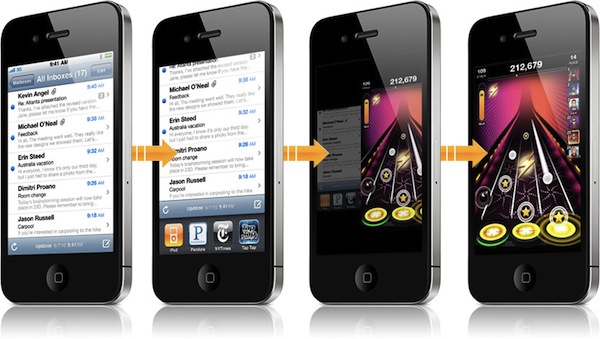AT&T and Verizon iPhone sales are nearly the same -- 40,000 per day

This morning, before the opening Bell, Verizon released first quarter earnings results, finally disclosing iPhone 4 activations -- 2.2 million since the device's February 11 launch. That's 44,898 activations per day for 49 days availability. However, Verizon started taking preorders a week earlier. By that measure, activations were 39,286 per day. Yesterday, AT&T revealed, as part of Q1 earnings, 3.6 million iPhone activations, which works out to 40,000 per day for the quarter.
Near equal sales is great news for Apple and Verizon, and really not terrible for AT&T (although there is some trouble in the numbers). Contrary to persistent punditry on the InterWebs, the numbers show no perceptible subscriber losses for AT&T. Before Verion iPhone's launch, for example, ChangeWave predicted that 26 percent of AT&T iPhone users would switch to Verizon. Other analyses predicted even higher defections -- some close to 50 percent. AT&T iPhone activations rose 1 million units year over year, with churn -- that is subscribers switching to another carrier -- flat Q1 to Q1.
Contrary to all ridiculous conspiracy-esque predictions that AT&T would massively lose subscribers, the more logical outcome emerged: By adding Verizon, Apple has cumulatively spread out sales, increasing overall volume. This clearly can be seen by looking at total activations as a percentage of sales. During calendar Q1 2011, AT&T and Verizon activations -- 5.8 million -- accounted for 37 percent of the 18.647 million iPhones sold by Apple, that's up from 30 percent a year earlier.
The math isn't precise because of the number of units in inventory and also number of phones sold here and then taken overseas for resale -- hence never activated. This affects AT&T more than Verizon, since there overwhelmingly are more GSM than CDMA networks globally. By that reckoning AT&T sales per day could be higher, but the carrier would have to release that data, rather than activations, to ascertain any differences. However, it can be reasonably assumed that kind of black market profiteering is negligible compared to, say, two years ago. Apple's smartphone was available from 186 carriers in 90 countries during calendar first quarter.
For the purposes of comparing activations as percentage of total iPhone sales, the numbers are consistent enough and revealing for the previous three quarters. During fourth calendar quarter, the United States accounted for 25 percent of global iPhone sales, based on 4.1 million AT&T activations and 16.24 million units shipped worldwide by Apple. For the third quarter, when Apple launched iPhone 4, the United States accounted for substantially more -- 37 percent of global sales, based on 5.2 million AT&T activations and 14.1 million units shipped worldwide by Apple. For second quarter: 38 percent, based on 3.2 million activations and 8.4 million global sales.
By the sequential reckoning of the three previous quarters, U.S. percentage of global iPhone sales is merely keeping par when adding AT&T and Verizon together. AT&T is losing sales to Verizon, by that measure. Would it be 2.2 million units more? Unlikely, given all the different factors, like brand loyalty, discounts, data plans, dropped calls, and family line contractual commitments, among many other factors.
Then there is something that can't be measured based on data revealed by both carriers: How many AT&T Apple smartphone activations are for the $49 iPhone 3GS. During yesterday's Apple fiscal 2011 Q2 earnings conference call, CFO Peter Oppenheimer said that the cheapo iPhone "was very popular. It did very, very well." So, by that measure, AT&T and Verizon iPhone sales aren't equal: One carrier has iPhone 4 and the other iPhone 4 and the heavily-discounted 3GS. That raises the question: What happens to AT&T when both carriers have iPhone 5 and v4 presumably replaces 3GS as the discounted handset?
Something else about the numbers: The U.S. percentage of global sales that AT&T and Verizon represent in first calendar quarter isn't measured against a static backdrop. Apple has made iPhone available to more carriers globally. A year earlier, iPhone was available from 151 carriers in 88 countries, compared to the aforementioned 186 carriers in 90 countries in Q1 2011. U.S. percentage of global iPhone sales likely would have declined sequentially, if not for Verizon distribution. While AT&T will lose iPhone sales to Verizon in the long term, cumulatively more Americans will use the handset -- and that's good for iPhone and for Apple.
Looked at differently, Wall Street analyst collectively predicted 16 million iPhones sold. Subtract 2.2 million Verizon activations and the number is closer to the Street's expectations. Considering that Verizon didn't announce early sales and there were few lines of buyers on launch day, analysts didn't have the best data to predict Verizon iPhone sales.
